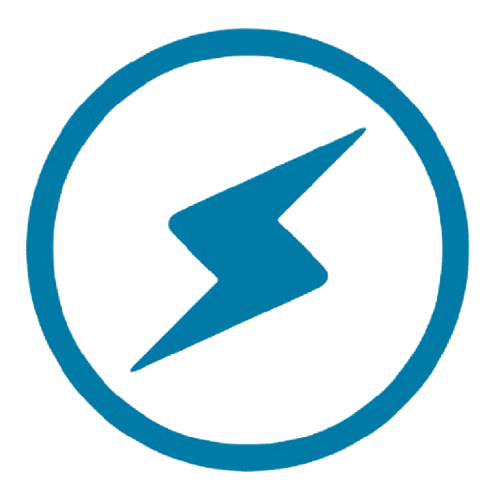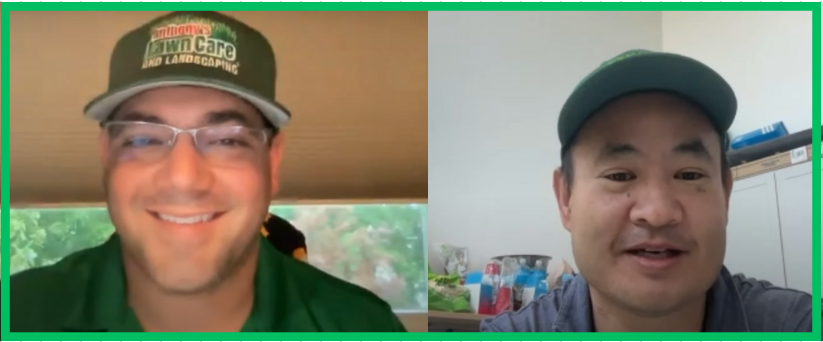
From throwing mud at the wall to strategic success, Anthony Hilb, owner of Anthony’s Lawn Care and Landscaping, wanted to build a winning team for Facebook marketing. Although he had been managing his Facebook campaigns with Dollar-a-Day strategy, his approach lacked a metrics-focused mindset.
Recently, during a meeting, I shared actionable strategies and practical tips for optimizing his campaigns using the MAA (Metric, Analysis, Action) methodology. If you’re not following MAA and demonstrating LDT (Learn-Do-Teach), your strategy is useless. By learning the process in-depth and how to execute it the first time, Anthony can effectively hire others and hold them accountable.
Whether you’re a business owner or a digital marketer, optimization is key to the success of your campaigns. Establishing clear performance goals and regular check-ins will help maintain accountability and drive results.
McKinsey documented MAA (Metric, Analysis, Action), a critical thinking methodology, 40 years ago. You can use it for problem-solving in anything—it’s not just a business tool for optimization. It’s a very effective way of taking what’s working, making it better, and eliminating what is not working.
Optimization isn’t about one magic thing you do once; it’s a series of actions that add up. Everyone looks for that one trick, but there isn’t one. Each time you look at something, you aim to make it 1% better.
Sometimes, it’s not just one thing that needs to change: it’s five little things. I’ve identified several points to improve in Anthony’s business. For example, while reviewing Anthony’s Tree Removal, I noticed they had a variety of videos on the site—some with a few thousand views and others with up to 1.3 million views. The key difference is that we promote the more successful ones more effectively.
If a video works well, like the one with 1.3 million views on Anthony’s social media, why not keep investing in it with Dollar-a-Day strategy and create variations? Larry Kim calls this creating unicorn children—taking a successful piece of content and making more versions of it. That’s our philosophy.
Optimizing Facebook campaign strategy revolves around the MAA (Metrics, Analysis, and Action) process. First, we collect and analyze metrics to identify trends and patterns. Then, we take action based on the analysis. This sequential process is not about filling out forms but about logical thinking and structured process. It’s essential to revisit and analyze metrics regularly to make informed decisions.
Finding and Evaluating Winning Content
When boosting on any channel, your standard of excellence should be to determine not just immediate business ROI, like who called you because of the post, but also initial engagement.
Anthony had the gold nuggets all along; we just helped uncover them. While reviewing content for boosting, we came across a video featuring a Mini Cooper holding up a large root ball during a tree removal project. The video stood out because it not only showcased the team’s expertise but also told an engaging story.
Initially, we considered boosting this post. However, upon further review, we realized that the storm-related content would be more impactful. We decided to switch to this content to ensure the boosted post would resonate better with the audience and maximize engagement.
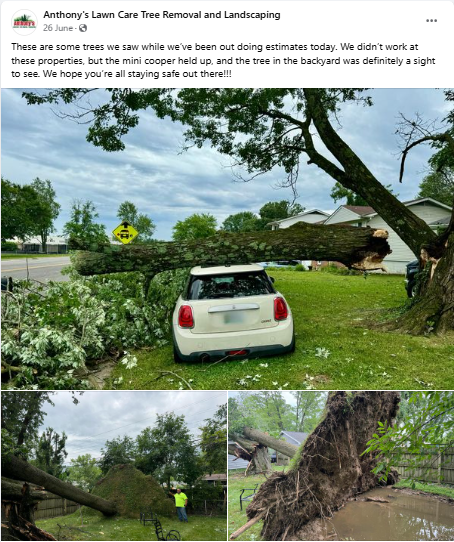
In Anthony’s previous campaigns, I explored winners among his boosted posts. For instance, he had already boosted one post, and I checked the insights for that. His goal was 10% engagement. For one particular post, with a reach of 3,300, he received 1,700 engagements, achieving only 5%.
While this didn’t mean it failed, it did indicate that it needed to aim for higher engagement to identify a real winner. We expanded the insights and noticed low engagement in terms of likes, comments, and shares. Most of the engagement came from link clicks, likely because the post was more of a sales pitch.
While this approach works fine for driving bottom-of-the-funnel actions, a winning post engages people and drives sales. You should balance the content to both engage your audience and drive business results
Anthony spent $700 to reach 33,000 people, resulting in 84,000 impressions. That’s $9 per thousand impressions, which is not bad considering the average is about double that. Networks charge you more for low engagement, so you need to understand their side too. This ad performed better than most bottom-funnel ads because it achieved an 82-cent cost per link click, which is good for home services. However, it didn’t meet excellence standards.
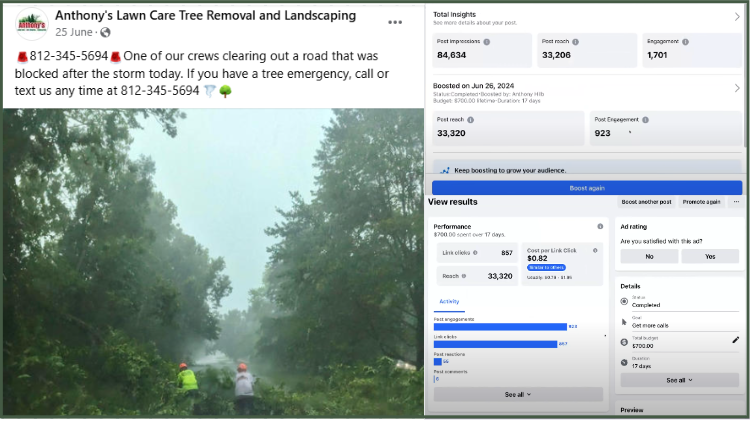
To analyze its potential, we looked at the post itself to see if it was evergreen. We previewed it to check the demographics, and Bloomington, with an audience age of around 35 looked good. We considered how often there are storms and if people remember Anthony’s Tree Removal Service during these times. If so, this ad might have potential.
We chose engagement instead of link clicks as the objective and let it run this post for Dollar-a-Day. Most of the time, we choose engagement when boosting posts.
Adapting Content for Evergreen Value
During a storm that wiped out the town for five days, Anthony created an ad mentioning clearing out a road after the storm. This was highly relevant at the time, but it’s not exactly evergreen. However, editing the post to say something like, ‘Remember that storm?’ can make it relevant again. You can take any moment, even Christmas content, and frame it as a memory to keep it evergreen. For example, ‘I remember last Christmas when…’.
To edit the ad, you need to hit ‘edit ad’ and change the copy first. Sometimes, you might need to edit the post before boosting it again. Adjust the audience and end date, and change the budget, extending the end date as far as it’ll allow. If it doesn’t save, it’s probably because the platform wants us to spend more.
People don’t read that carefully, so minor adjustments can make a big difference. By making these changes, you can make any post evergreen and continue to get value from it. As a writer, I understand how to make content relevant and engaging. So, it’s never too late to edit the post and boost it effectively.
There is a post about Anthony’s knowledge panel, which I shared and tagged Anthony. However, it’s important to note that you can’t boost a shared post directly. Although it may appear as an option, it won’t work. You need to boost a post that you originally created yourself.

Dollar-a-Day Strategy for Effective Marketing
The Content Factory training emphasizes that when you have a successful piece of content, it should be repurposed across all channels. Why wouldn’t it live everywhere? Some might think LinkedIn differs from Facebook or YouTube, but it’s not. Post it on all platforms and start boosting for Dollar-a-Day. If it performs well, you can allocate more money. In this scenario, Facebook should be your primary focus, given your target audience of homeowners.
Facebook is a great place to boost, especially for Anthony’s audience. While younger generations might prefer other platforms, Facebook remains effective for his target demographic. When I reviewed Anthony’s Facebook, by scrolling through recent posts, I could identify which ones had the most organic reach and engagement.
For example, a ‘Happy Thursday’ post could be shared weekly, but posts with significant traffic, like the one featuring a tree estimate with a cool video, show high potential. Understanding why these posts perform well helps you create more effective content and optimize your boosting strategy.
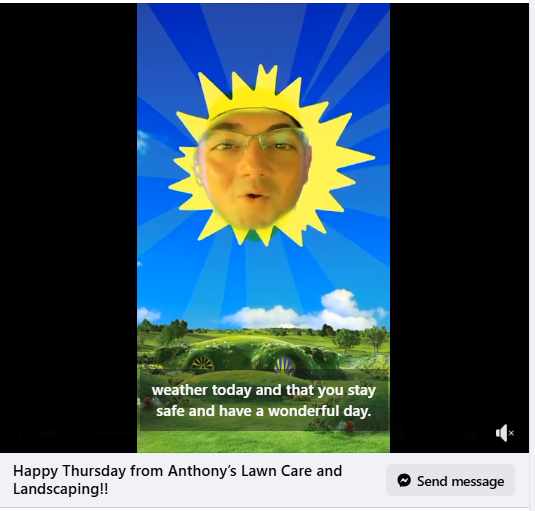
Boosting Posts for Maximum Engagement
In the boosting process, avoid the AI-generated ads—they’re usually bad. When you choose engagement, friends of those engaging can see it, which Facebook prioritizes.
We have to go through the steps of boosting, selecting engagement, and avoiding poorly generated AI ad copy. The goal is to create engaging content that gets shared and seen by more people, ultimately driving better results.
So, you should focus on people in your local area, in this case, Bloomington plus or minus a few miles. We’re not trying to hit the whole United States, which would be ridiculous. The best posts are those mentioning location and include a story or video.
While boosting posts again for Anthony’s Lawn Care and Landscaping, we didn’t choose automatic because we wanted more control. I prefer engagement as an objective, especially with story posts. Stories are my favorite because they resonate more.
We set the budget to $84 for seven days, which comes to $12 a day. They estimate reaching 1,500 to 4,200 people daily. Assuming we reach 2,500 people for $12, that’s about $6 CPM, which is expected. They’re always trying to find ways to get you to spend more, but this looks good, so we hit publish and chose automatic placements for now.
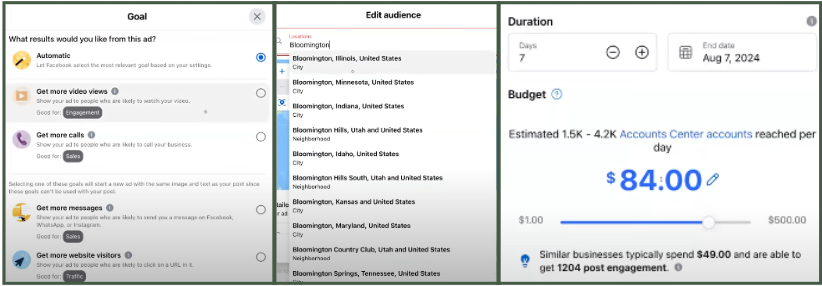
In evaluating results, you should look at overall engagement for the post. For instance, if you reach a few hundred people without boosting, you might only get 30 or 40 engagements. However, with paid boosts, you could see 383 direct engagements and an additional 600 to 700 organic ones. So, while the stats might show that 98% of engagement is driven by ads, this reflects the true impact of your spending.
Moving forward, you should boost more posts. With the power of MAA, you need to revisit these every few days to assess their performance. The ideal posts often have a story or engaging content. For example, a post about Anthony’s Lawn Care and Landscaping giving away two iPads in a USA contest could be very engaging.

I’ve discovered that posts featuring family or personal stories, like a post featuring Anthony and his son Andrew’s ‘Go to Work with Dad Day’, tend to perform exceptionally well. These types of posts resonate with homeowners and families, making them more engaging. We should continue to create and boost similar content.
Regarding the metrics, this post had a 12% engagement rate, higher than the usual 10%. This is partly due to the secondary organic effects of ads—paid engagement often brings in more organic engagement as friends of those who engage also see the post.
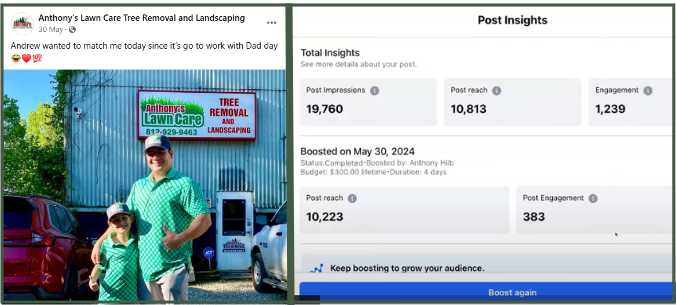
When choosing objectives for boosting, engagement often provides better long-term results than phone calls. Selecting phone calls as the objective increases ad costs significantly and may not align with the nature of the content. For example, a ‘Call Now’ button doesn’t suit a post featuring a family moment. By focusing on engagement, we maintain lower costs and create a more relevant ad experience.
Most businesses don’t have many videos, so they miss out on this opportunity. Luckily, Anthony has created plenty of content for us, giving us a significant advantage.
While reviewing the insights for another video post on Anthony’s Junk Hauling page, I noticed it didn’t meet engagement standards, only achieving around 4%. I considered boosting this post again but with a focus on engagement rather than calls.

You can have multiple boosts on the same post, like one for engagement and another for calls, which targets different audiences. We can also do this on YouTube and other platforms. It’s the same concept on every network, not just Facebook.
We can experiment with different boosts. This helps us identify which content resonates most with our audience.
Boosting Videos for Better ROI
To encourage better performance, you should set up a friendly competition where you should reward whoever achieves the best ROI each month. For Anthony, I’d suggest boosting his videos, especially those featuring Bloomington, his green hats, or visually captivating scenes like a big tree in the yard.
For instance, a post featuring Anthony’s son Joseph with an ad running on TV could yield positive results. We previously boosted the ad, but we observed low performance. This might be because we used the ‘Call Now’ call-to-action. Instead, we should focus on boosting for engagement, similar to our successful approach with other posts. This will help us determine which content—whether featuring Joseph or Andrew—drives the most engagement and delivers the best ROI.
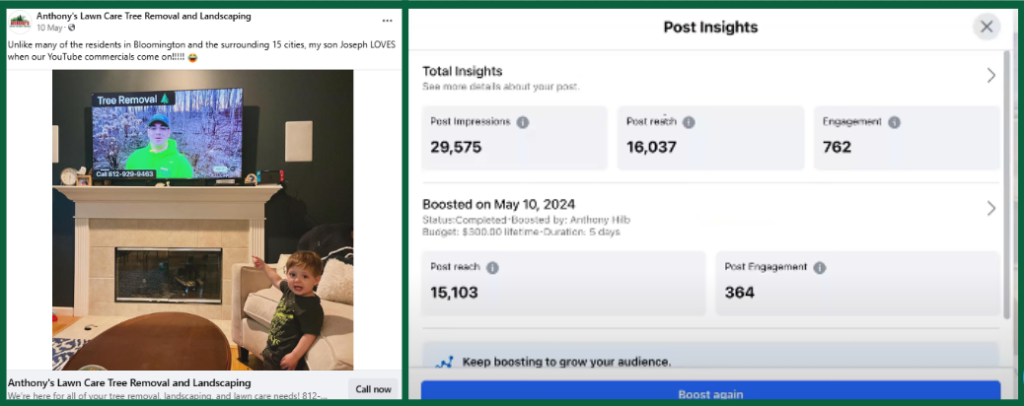
Anthony had boosted a post about being the ‘Netflix of Landscaping’, and it had a 10% engagement rate. The quality of engagement was decent, although some people found the Netflix reference confusing.
Content with an emotional story is particularly effective. For example, a St. Patrick’s Day video might have worked well, but stories about the company’s growth—from starting with an old minivan to now having multiple trucks and a big team—would also be great.
Be mindful of Facebook’s sneaky changes. For example, adjusting one parameter can change another without you realizing it. It’s like ordering double chicken at Chipotle but not getting it. I want it to remain exactly as I set it.
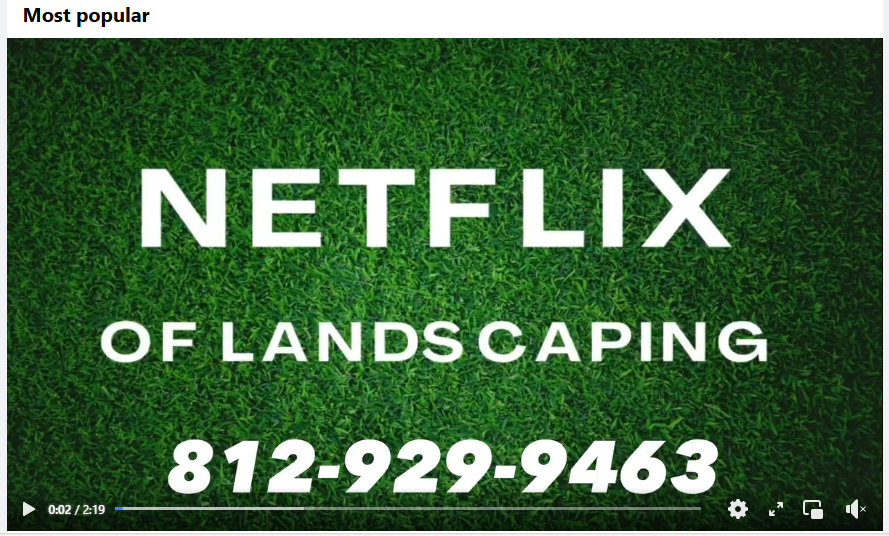
When it comes to boosting, keeping the audience size around 100,000 and starting with a modest budget is key. We focused on Bloomington and reused successful audiences for new posts. This systematic approach involves testing with small amounts, finding what works, and then scaling up. Comparing the results of the boosts helps us identify winners and allocate more budget to them.
Online Traffic: Focusing on What Works
The idea of MAA is to take what’s working well and get more out of it instead of trying random things. For instance, when we analyzed Google Analytics data for traffic acquisition of Anthony’s Lawn Care and Landscaping. We found that two-thirds of his traffic came from organic sources.
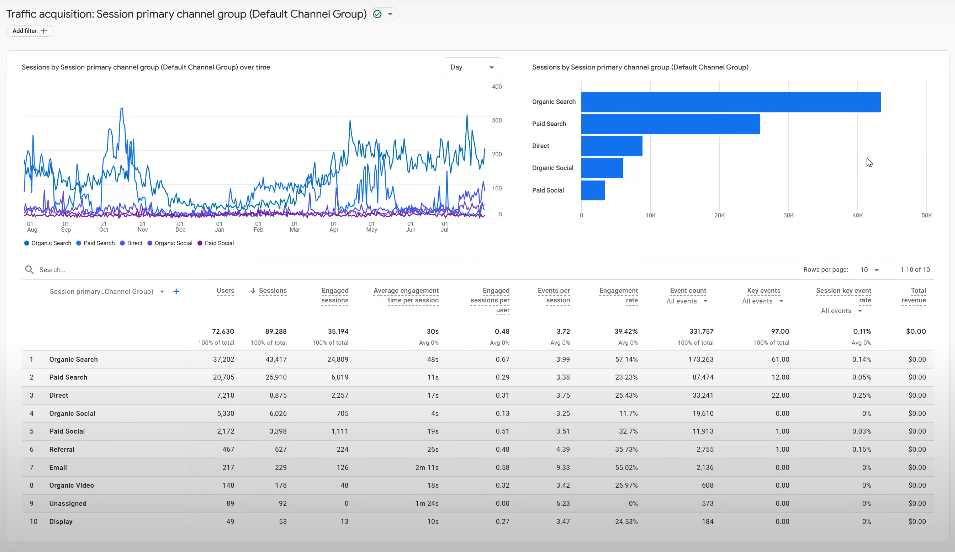
Google lists a significant portion of traffic as ‘direct’, which was previously called ‘direct none’. This category includes a lot of social media traffic. Currently, Google classifies 20% of his traffic as ‘direct’, which should ideally be under 10% or even 3-4%.
Surprisingly, his social traffic was low, but this might be due to technical reasons where social apps misattribute traffic. Google’s reporting can sometimes be inaccurate, showing very little traffic from platforms like Facebook because it lumps it into ‘direct none’. This happens due to technical issues with tracking referrals from social media apps.
Despite these discrepancies, Anthony’s business saw significantly higher organic search traffic, and the session quality was good. The engagement rate reached 50%, which is double that of other sources.
Organic search means showing up at the top of Google results without paid ads. This doesn’t include Local Service Ads (LSA) or Google Maps, although Google Maps is sometimes included in organic search.
Understanding Direct Traffic Fluctuations and Offline Activity Tracking
We previously noted that Anthony’s high ‘direct‘ traffic might be an issue with email tracking. Usually, a high direct traffic percentage can indicate problems with attribution, particularly from social media sources.
When you have mailers, TV ads, or billboards, that aren’t digital, it causes fluctuations in ‘direct none.’ If direct none is usually at 3-4% but spikes because of a TV or flyer campaign, which indicates offline activity. By changing the date range, you can see how ‘direct none’ fluctuates. Anthony’s profile was still at 10% direct traffic.
Anthony sent out around 20,000 flyers recently, which explains the spike. You can track direct mail somewhat using vanity numbers and URLs, but it also allows for indirect tracking. It’s interesting to see a significant increase recently. Anthony’s offline activity must have increased compared to usual levels.
It’s important to understand that fluctuations in direct traffic indicate offline activity, but it’s not about the level of direct traffic itself. Anthony’s Lawn Care and Landscaping does a lot of direct mail campaigns, which could explain some of these patterns.
With MAA, you must interpret the numbers correctly; otherwise, you will make the wrong diagnosis and not take the most effective action.
Another important aspect is the stacking effect of your campaigns. While I won’t delve into the specifics here, it’s crucial to understand that when you’re running more direct mail, you should also turn up PPC and mid-funnel brand campaigns simultaneously. This creates an omnichannel effect where different channels support each other.
For example, I like to pre-seed the market. If I am targeting a specific zip code, I’ll start running mid-funnel ads about a week before the direct mail drops. This warms up the audience so that when they receive the direct mail, they feel a sense of familiarity. I have done this many times with big brands, and it psychologically primes people to respond because they recognize us.
Digital marketers often overlook the power of TV, mailers, and billboards. However, these channels reinforce each other. Although you could run a test to measure the exact lift, you’d need to be in multiple geographies for it to be accurate. Anthony’s business services almost 20 cities, so we could set up tests by city or region. It’s cleaner to randomize in major areas like LA, New York, Atlanta, and Chicago to avoid spillover effects.
It’s also crucial to align your digital efforts with the direct mail calendar. When you plan a big direct mail drop, that’s when you need to ramp up mid-funnel campaigns, especially Dollar-a-Day boosting.
Creating a one-minute video that ties into the direct mail theme can be very effective. For example, if the direct mail features a scenario where a tree falls on a roof, you can reuse that same creative in your digital ads. By showing this image several times, even subconsciously, people will recognize it when the direct mail arrives. This belief in the power of the subconscious mind in marketing, as Frederick D Silva taught us, enhances our campaign’s effectiveness.
Tracking Revenues for Better Optimization
Improving revenue tracking for key events in a marketing campaign is essential. You can use tools like the conversion API or offline conversions to automatically assign revenue amounts to important events (like sales or leads) instead of manually checking each one.
Sometimes, there’s a delay between when you get a lead and when you know how much money it’s worth. For instance, you might get a lead today but only know its value after a week.
Because of this delay, it’s helpful to have both automated tracking and human oversight to ensure accuracy. Delays in knowing the value of a metric make it harder to optimize the system in real time since the system can’t immediately adjust to the actual value of the leads.
Editing Posts
Updating old posts to make them more relevant can significantly boost engagement. For example, we took a post from Anthony’s Facebook that said, ‘Happy Sunday’ and ‘Good morning’ and edited it to say, ‘Hey Bloomington, Happy Sunday! Good morning!’. Mentioning Bloomington made the post more relevant to his audience. While videos generally perform better because they tell a story, pictures work well too.
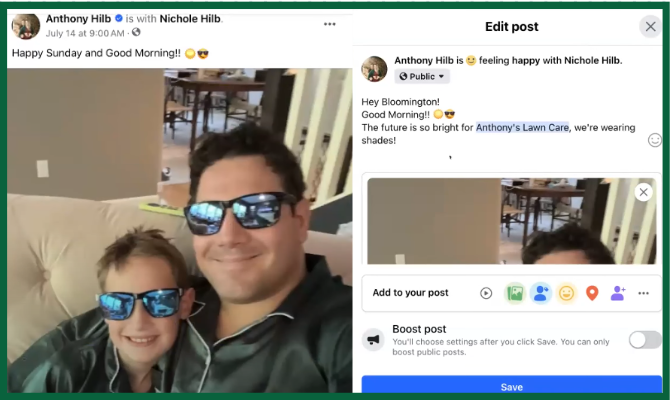
For example, posts that include videos tend to generate more engagement than those with just pictures. When over 40 people interact with a video, it creates a ripple effect. As users scroll through their feeds, they see that their friends have liked or interacted with the video. This social proof helps build momentum and relevance, as the system prioritizes showing content to people connected to those who have engaged.
Revisiting high-performing posts, even from a year or two ago, can be beneficial instead of always creating new content. Even brief comments can warrant boosting for mid-funnel engagement, leading to direct interactions.
The Difference Between Boosting on a Personal Profile Versus a Business Page
We experimented with boosting on both the business page and on Anthony’s personal profile. Boosting posts on Anthony’s personal profile consistently yields better results than on the business page. People tend to connect more with Anthony as an individual than with just the business entity. They are more likely to engage—commenting, liking, and sharing—because it feels more personal.
When people scroll through their Newsfeed, they expect to see posts from individuals, so when we boost Anthony’s posts, particularly those featuring children or fun events, they seamlessly blend into the feed. If we execute it correctly, viewers won’t even realize it’s a boosted post, nor will they notice that the content could be several years old.
Optimizing Boosting Strategies
- This approach involves conducting several rounds of these boosts. You start with a modest budget—say, $20—and carefully analyze the results.
- Once you identify the high-performing posts, or winners, you scale up your investment, perhaps increasing the budget to $200.
- You continue testing these posts and compile the successful ones into a greatest hits sheet within your Content Library.
- From there, you can repurpose these successful posts across multiple networks and create variations, gradually building momentum.
Anthony’s Facebook ad budget ranges from $2,000 to $3,000 a month. The data supports making small bets to find winners and then making big bets on them. This method not only maximizes return on investment but also ensures continuous improvement in advertising efforts.
However, it’s important to note that until you develop a robust library of winning posts, you won’t have that consistent pattern or momentum. Once you do, though, this process will become routine—like second nature. There will be no need to convince anyone of its value; it will simply become part of your ongoing strategy.
This method is not just about efficiency—it’s about impact. By following this approach, I’m confident we can significantly increase the effectiveness of the ads we chose to run for Anthony’ Lawn Care and Landscaping. If we stay disciplined and follow the metrics to analyze and optimize this strategy, we could potentially reduce our advertising spend by about a third while still achieving the same, if not better, results.
Some people view MAA (Metric, Analysis, Action) as a complex, time-consuming task and conduct it weekly. However, once familiar with the process, it becomes a quick, enjoyable, and powerful routine. Eventually, you can integrate it into daily activities without much effort. The MAA process cuts through the noise and makes your recommendations more targeted.
Anthony has already established a solid foundation to own his Facebook marketing campaigns. The next step is for his team to optimize and systematize these efforts so that the campaigns run efficiently and effectively, almost like a machine.
